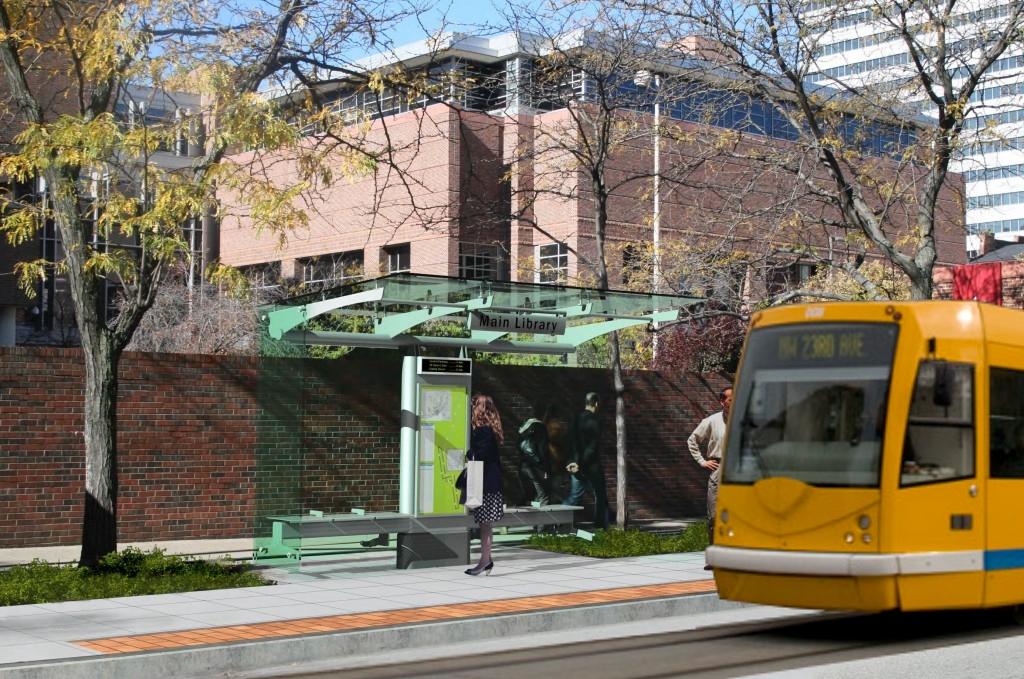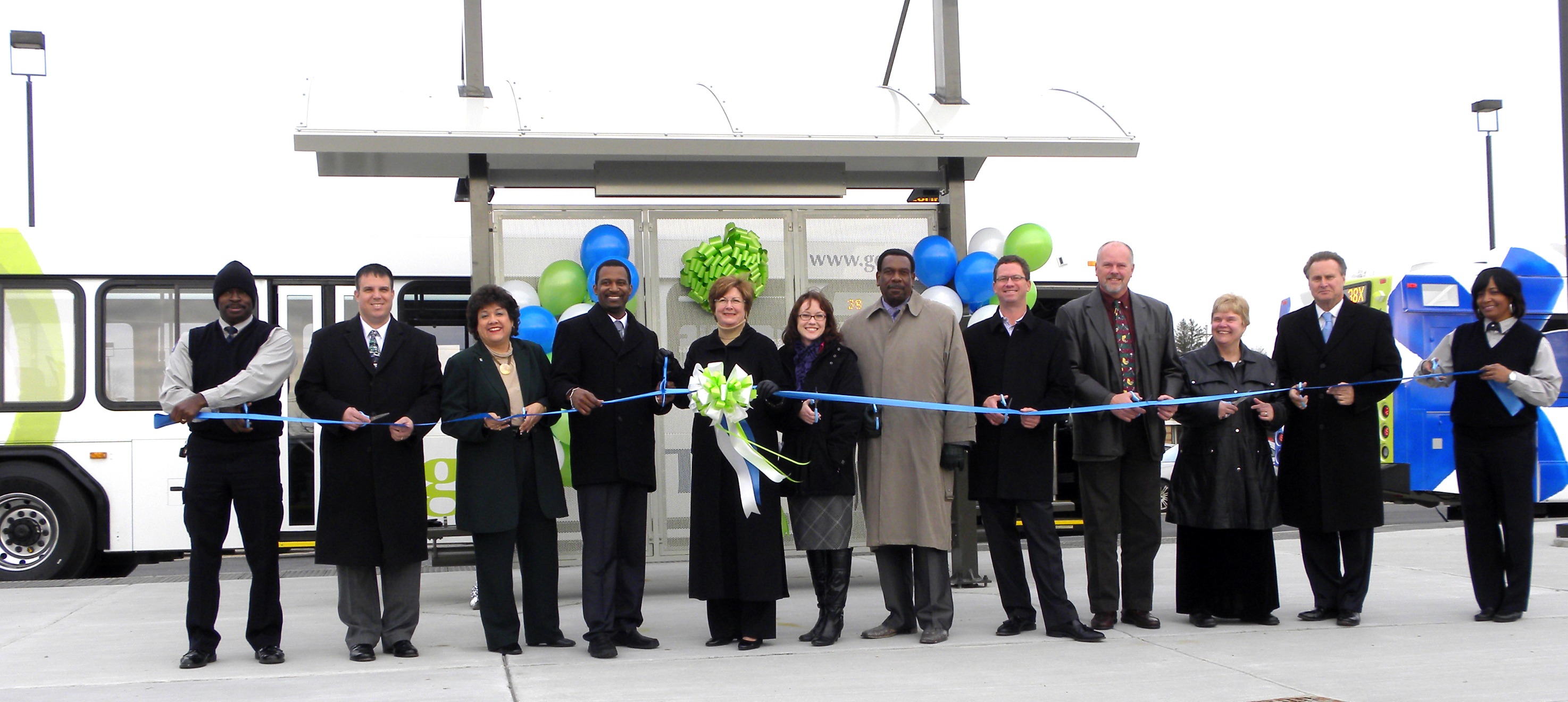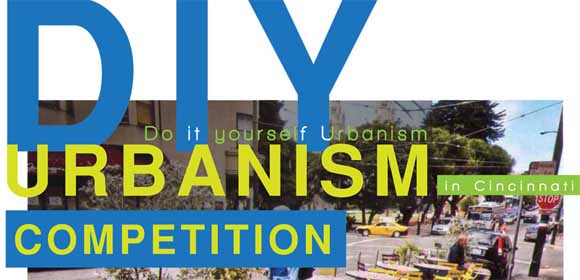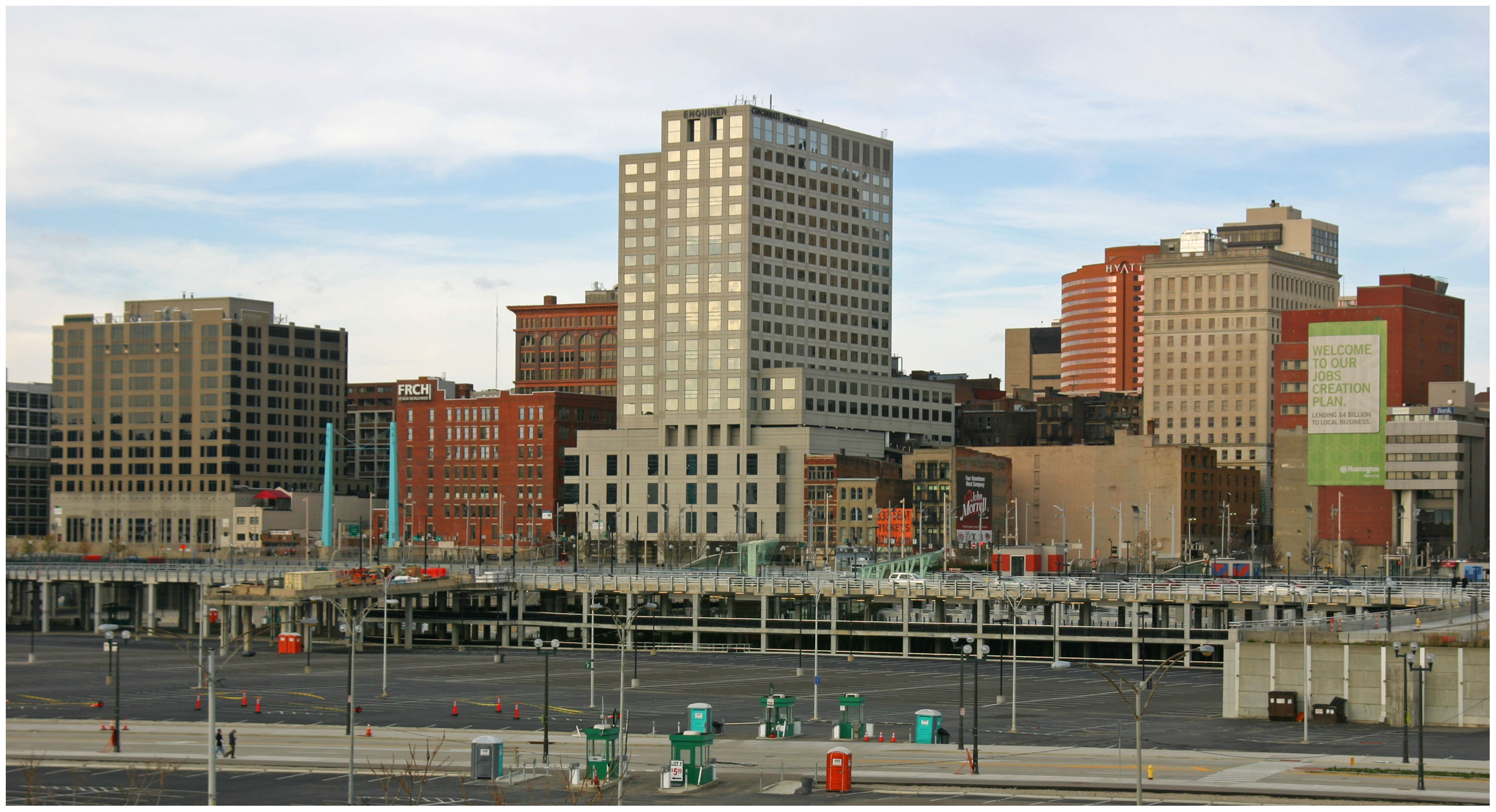The City of Cincinnati has chosen a final design for 18 station shelters along phase one of the Cincinnati Streetcar route. Designed by Cincinnati-based DNK Architects, the stations are described as clean, minimal and are compliant with the US Department of Transportation “Buy America” guidelines. The firm researched station designs in other cities, and developed a design that would be easily recognized and protect riders from the elements for the short time they will be waiting at stops.
“The streetcar project is a series of smaller pieces that must come together before construction of the track begins. The shelter design is another milestone in that list of items,” said Chris Eilerman, the City’s Streetcar Project Manager. “This design combines a modern look, while at the same time, fits in with the historic architecture served by the streetcar.”

The stations along the Cincinnati Streetcar route will have a clean, contemporary design like this one shown outside the Main Library.
Project officials say that the modular design ensures various elements will be easy to maintain and replace. The materials themselves are thin, light, and durable – allowing natural light to come in while protecting waiting riders from the elements. Each station will include a route map, information about the streetcar system and an electronic sign displaying the arrival time of the next car, as well as other important messages for riders.
“We designed the station structures to call to mind what the streetcar will bring to Cincinnati — a public transportation system that everyone can use to connect to neighborhoods,” said David Kirk, founder and principle architect, DNK Architects, and lead architect for the streetcar station design. “We want people to look at the stations and see how easy, safe, and comfortable it is to explore all that Cincinnati has to offer.”
Selection of the station design was the final step in reaching a complete design on the first segment of the Cincinnati Streetcar. In order to reach final design, the streetcar team completed a number of other critical steps, including surveys of the entire route, inspections of basements near the route that lie under sidewalks, coordination of vehicle options, completion of an independent peer review of the project and performance of a quality control review of the entire project.
Next steps for the project are continued negotiations to reach agreements with utility companies. The shelters will be built as part of the construction contract, which is scheduled to be bid in the first quarter of 2012.










